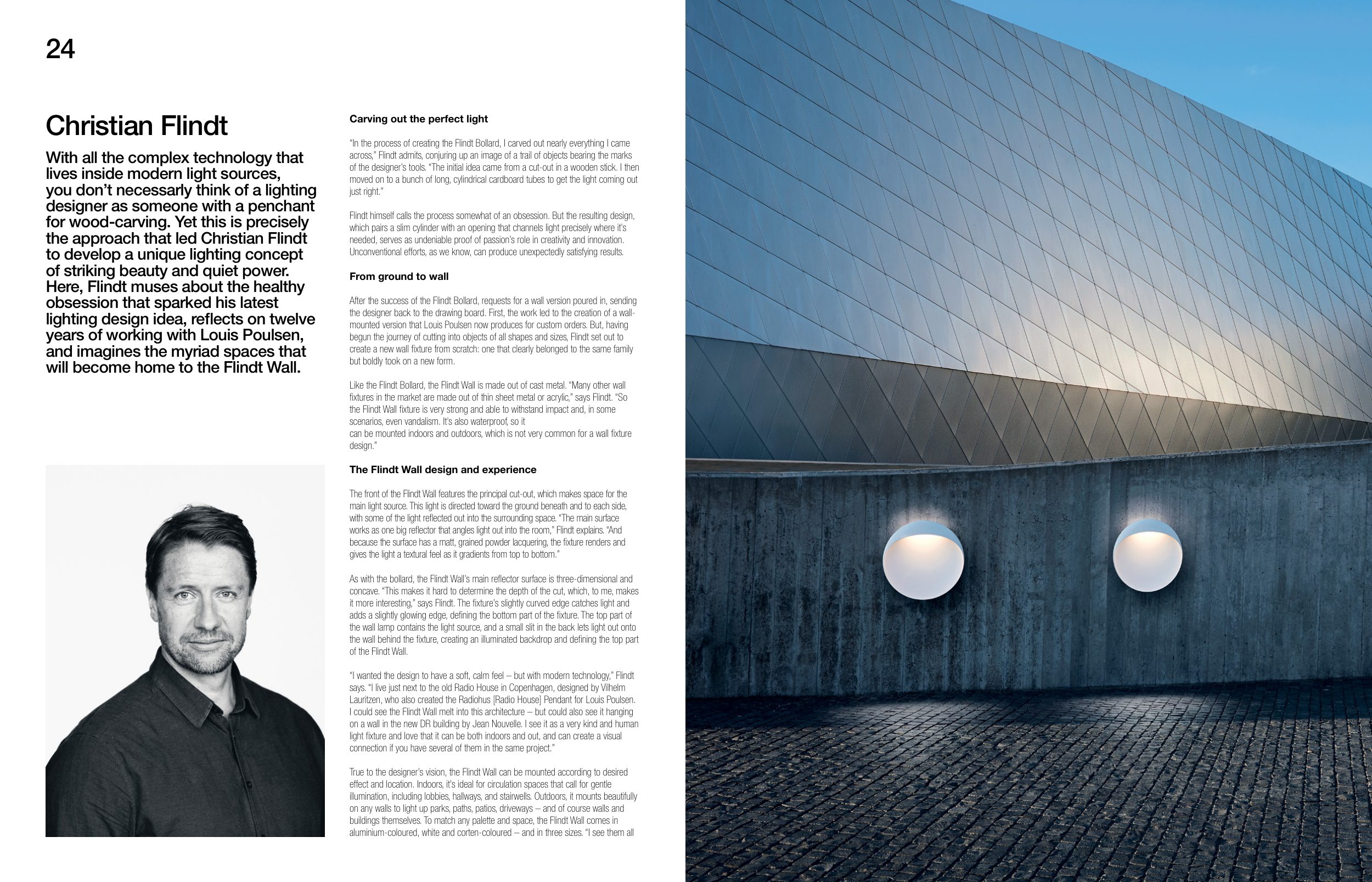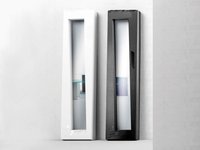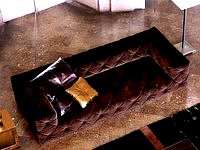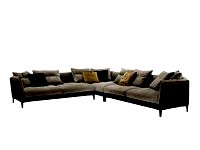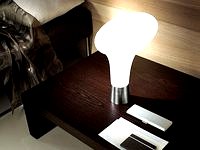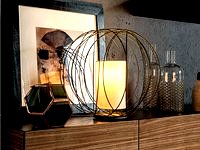Decorative - Pendant
Technical info p. XXX
25
24
Christian Flindt
With all the complex technology that
lives inside modern light sources,
you don’t necessarly think of a lighting
designer as someone with a penchant
for wood-carving. Yet this is precisely
the approach that led Christian Flindt
to develop a unique lighting concept
of striking beauty and quiet power.
Here, Flindt muses about the healthy
obsession that sparked his latest
lighting design idea, reflects on twelve
years of working with Louis Poulsen,
and imagines the myriad spaces that
will become home to the Flindt Wall.
Carving out the perfect light
“In the process of creating the Flindt Bollard, I carved out nearly everything I came
across,” Flindt admits, conjuring up an image of a trail of objects bearing the marks
of the designer’s tools. “The initial idea came from a cut-out in a wooden stick. I then
moved on to a bunch of long, cylindrical cardboard tubes to get the light coming out
just right.”
Flindt himself calls the process somewhat of an obsession. But the resulting design,
which pairs a slim cylinder with an opening that channels light precisely where it’s
needed, serves as undeniable proof of passion’s role in creativity and innovation.
Unconventional efforts, as we know, can produce unexpectedly satisfying results.
From ground to wall
After the success of the Flindt Bollard, requests for a wall version poured in, sending
the designer back to the drawing board. First, the work led to the creation of a wall-
mounted version that Louis Poulsen now produces for custom orders. But, having
begun the journey of cutting into objects of all shapes and sizes, Flindt set out to
create a new wall fixture from scratch: one that clearly belonged to the same family
but boldly took on a new form.
Like the Flindt Bollard, the Flindt Wall is made out of cast metal. “Many other wall
fixtures in the market are made out of thin sheet metal or acrylic,” says Flindt. “So
the Flindt Wall fixture is very strong and able to withstand impact and, in some
scenarios, even vandalism. It’s also waterproof, so it
can be mounted indoors and outdoors, which is not very common for a wall fixture
design.”
The Flindt Wall design and experience
The front of the Flindt Wall features the principal cut-out, which makes space for the
main light source. This light is directed toward the ground beneath and to each side,
with some of the light reflected out into the surrounding space. “The main surface
works as one big reflector that angles light out into the room,” Flindt explains. “And
because the surface has a matt, grained powder lacquering, the fixture renders and
gives the light a textural feel as it gradients from top to bottom.”
As with the bollard, the Flindt Wall’s main reflector surface is three-dimensional and
concave. “This makes it hard to determine the depth of the cut, which, to me, makes
it more interesting,” says Flindt. The fixture’s slightly curved edge catches light and
adds a slightly glowing edge, defining the bottom part of the fixture. The top part of
the wall lamp contains the light source, and a small slit in the back lets light out onto
the wall behind the fixture, creating an illuminated backdrop and defining the top part
of the Flindt Wall.
“I wanted the design to have a soft, calm feel – but with modern technology,” Flindt
says. “I live just next to the old Radio House in Copenhagen, designed by Vilhelm
Lauritzen, who also created the Radiohus [Radio House] Pendant for Louis Poulsen.
I could see the Flindt Wall melt into this architecture – but could also see it hanging
on a wall in the new DR building by Jean Nouvelle. I see it as a very kind and human
light fixture and love that it can be both indoors and out, and can create a visual
connection if you have several of them in the same project.”
True to the designer’s vision, the Flindt Wall can be mounted according to desired
effect and location. Indoors, it’s ideal for circulation spaces that call for gentle
illumination, including lobbies, hallways, and stairwells. Outdoors, it mounts beautifully
on any walls to light up parks, paths, patios, driveways – and of course walls and
buildings themselves. To match any palette and space, the Flindt Wall comes in
aluminium-coloured, white and corten-coloured – and in three sizes. “I see them all


